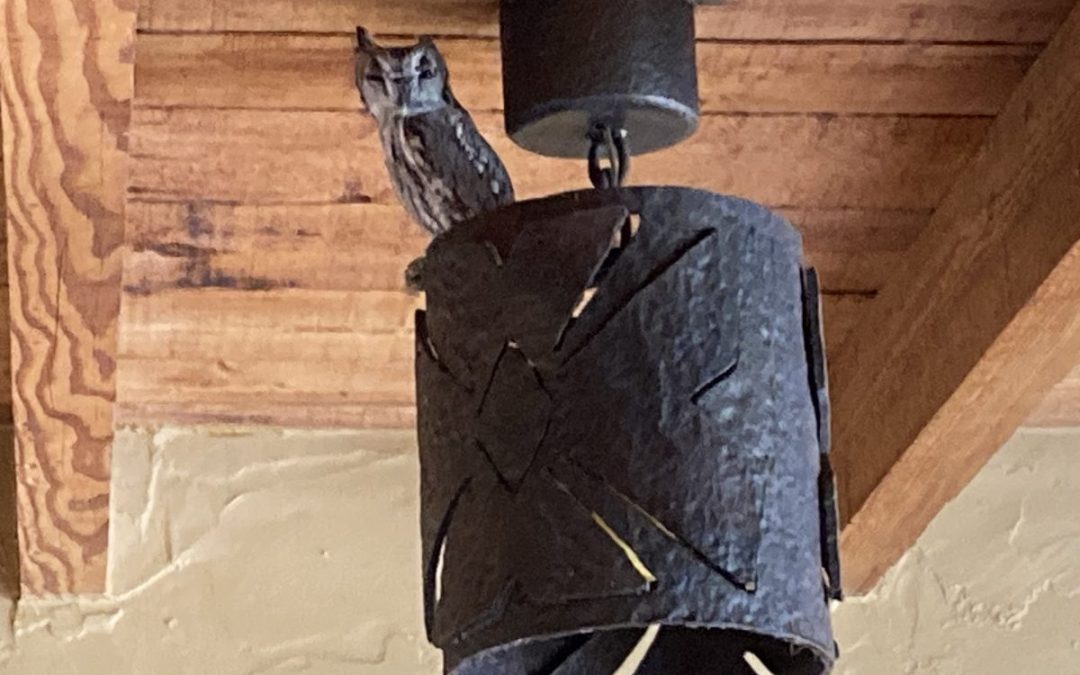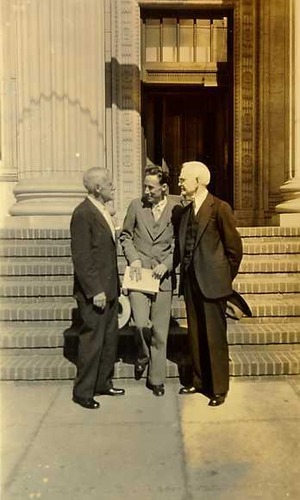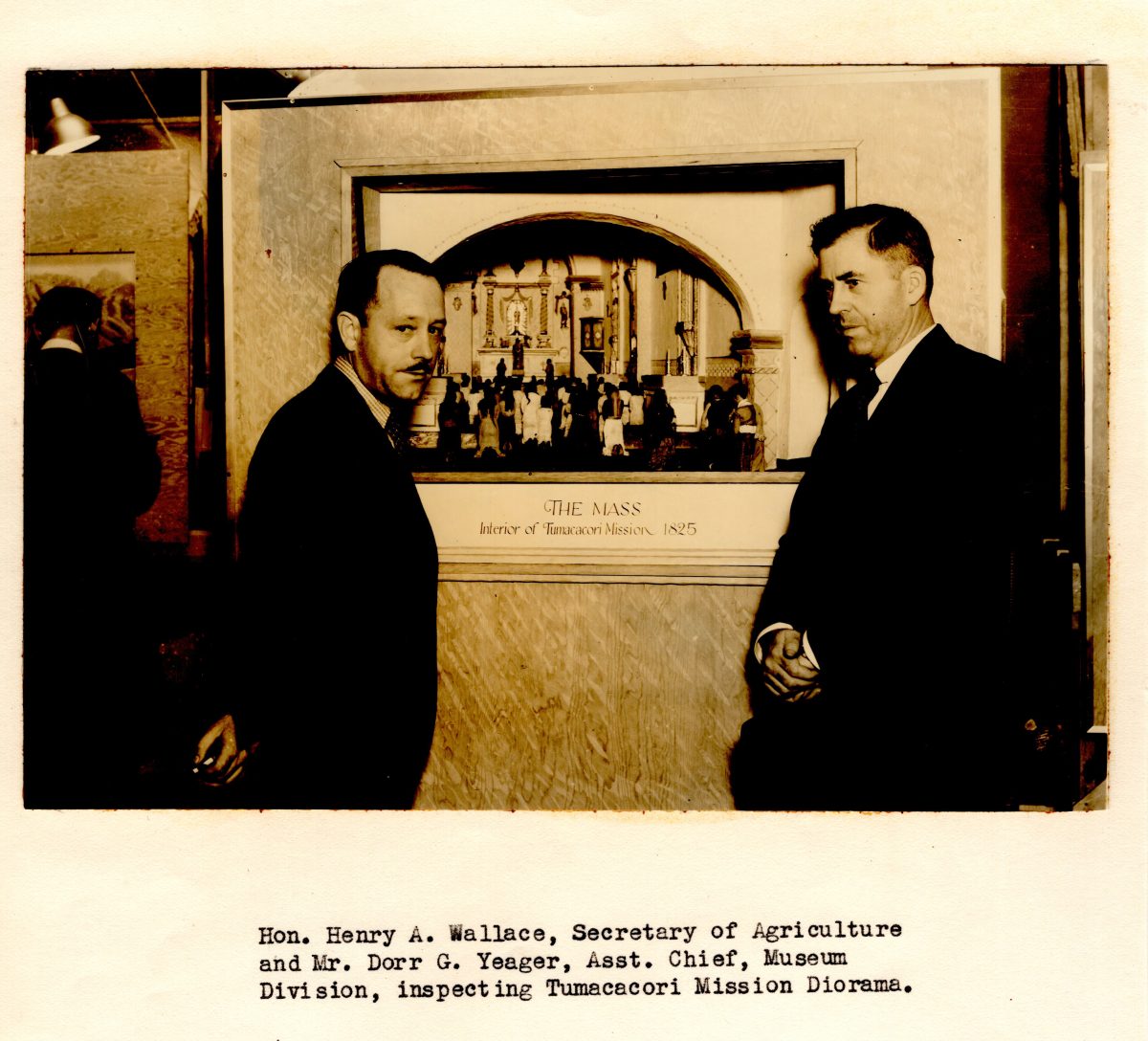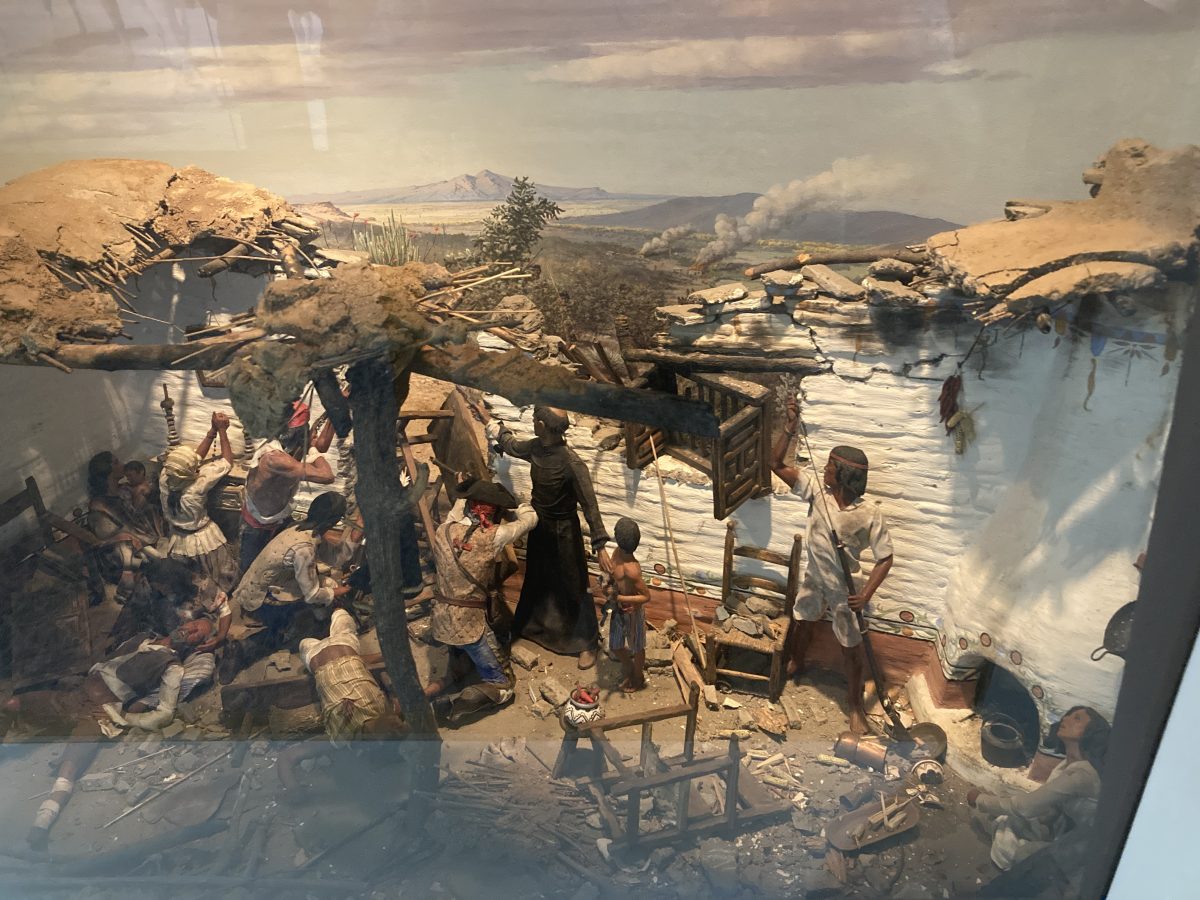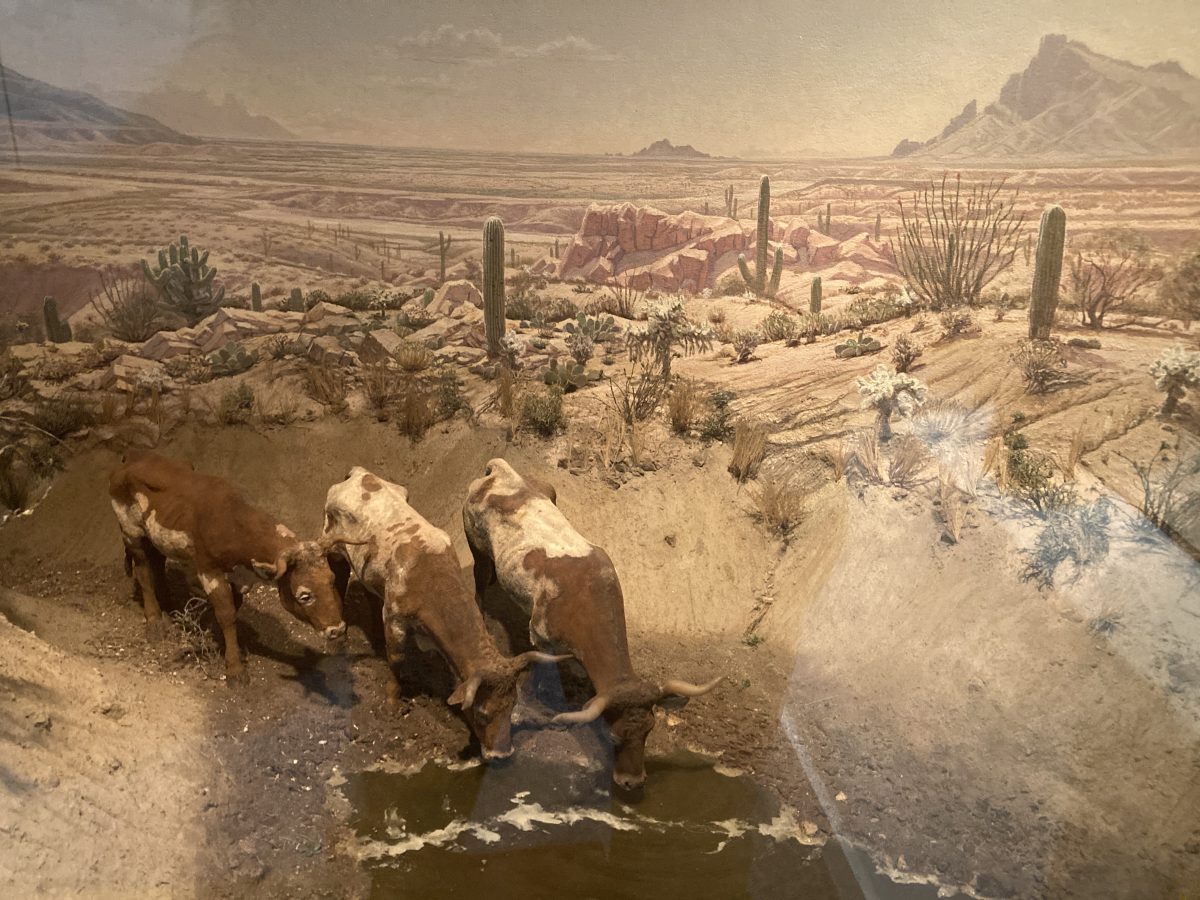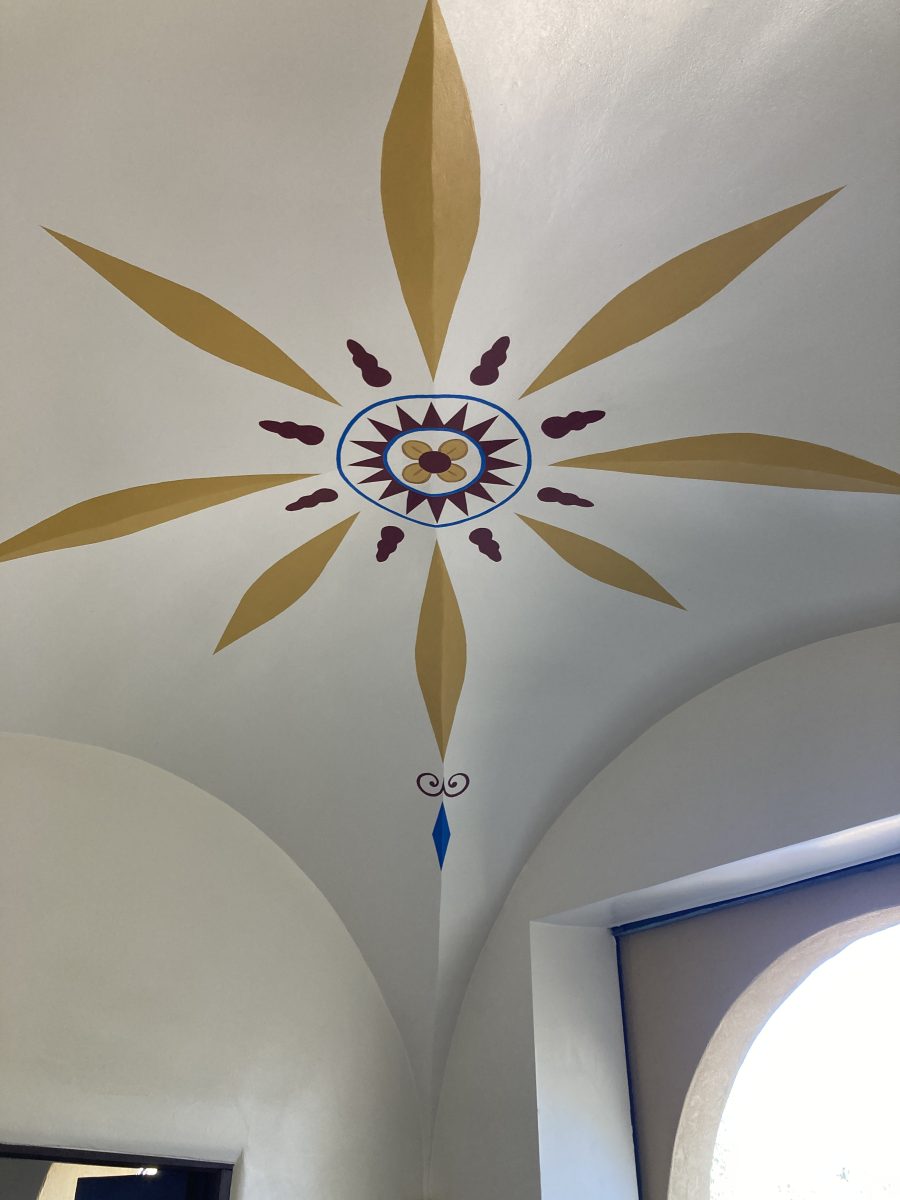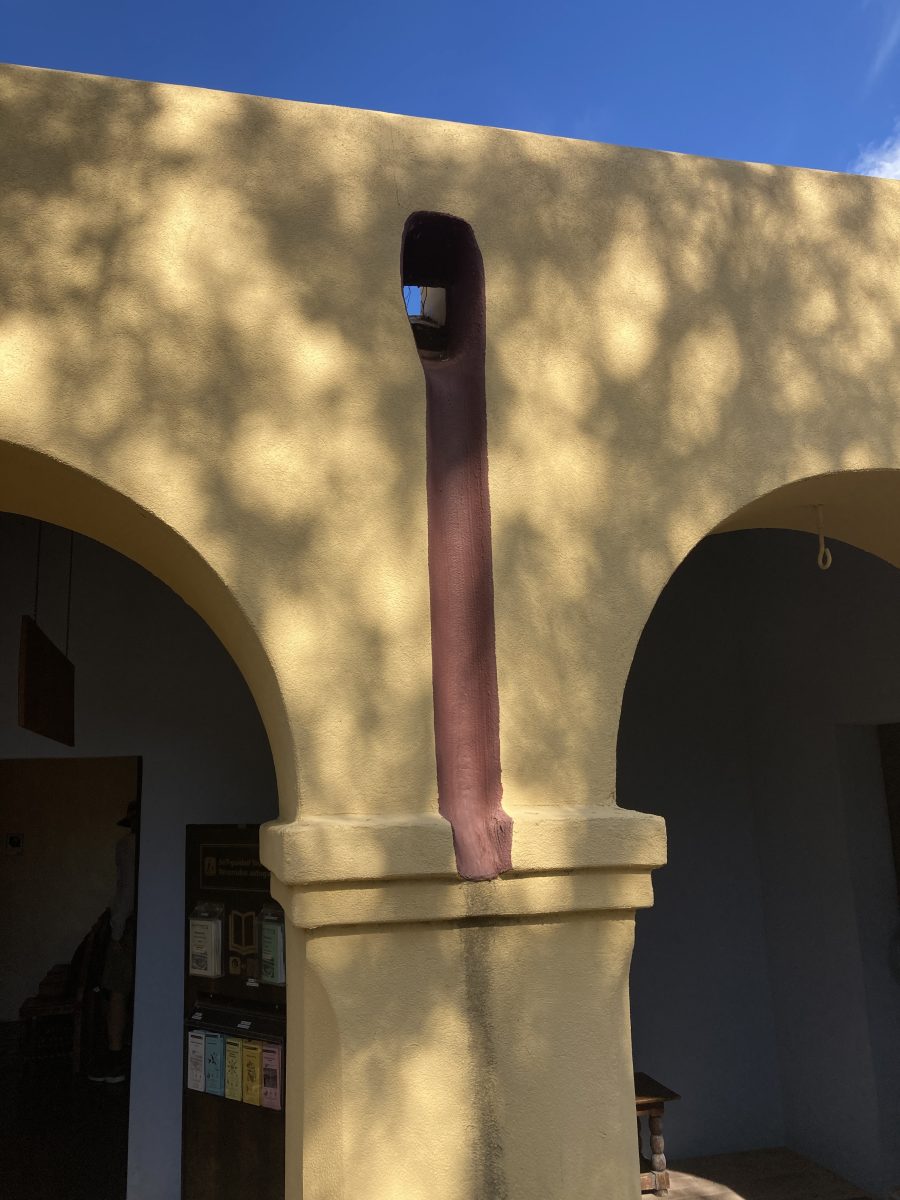Well, OK, a little off topic, but this is a Screech Owl that found a nice perch on my entry light here in Tucson and didn’t seem to care at all if I walked underneath him (or her) all day. By night, he had departed, ostensibly to hunt, leaving a nice pellet of bones near my doormat (and more). As I walked by, all day, his head swiveled like a security camera…..body motionless.
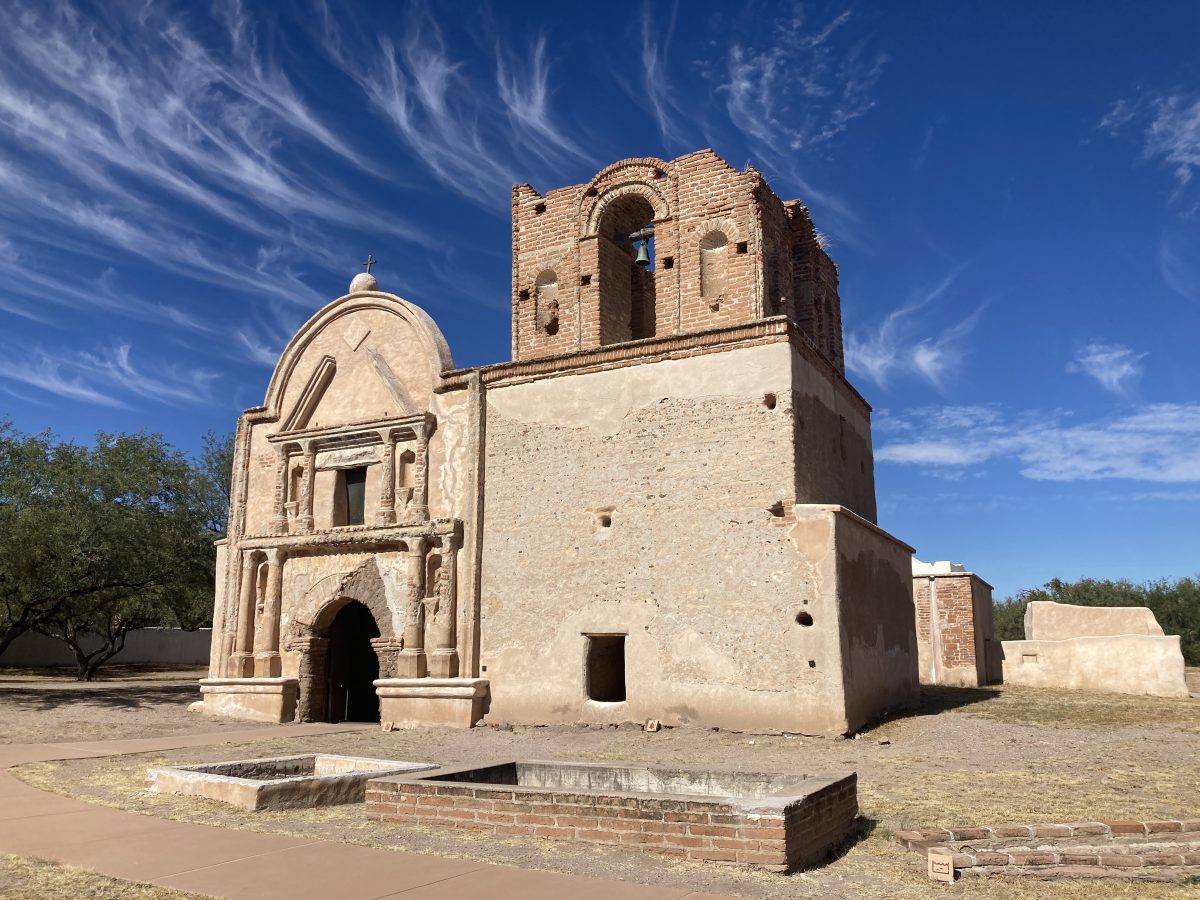 Annually, the National Park Service hosts an international festival at the Tumacacori Mission. Paired with this event is a Friday evening Luminaria walk–or art walk in nearby town of Tubac–once the largest town in Arizona. I first visited this event in 2022 where they hosted Mexican Dancing Horses–none made it across the border this year though–so click the highlight above for a sneak peak from 2022.
Annually, the National Park Service hosts an international festival at the Tumacacori Mission. Paired with this event is a Friday evening Luminaria walk–or art walk in nearby town of Tubac–once the largest town in Arizona. I first visited this event in 2022 where they hosted Mexican Dancing Horses–none made it across the border this year though–so click the highlight above for a sneak peak from 2022.
This is the mission today. It was first established on the east side of the Santa Cruz River in 1691 but was moved to it’s present location after the O’odham (Pima) Rebellion in 1751 which drove the Spanish out temporarily. They reoccupied the settlement building at this current site in 1753 with the first mission building begun in 1757 under the direction of Eusebio Kino. In 1768, King Juan Carlos of Spain ordered the Jesuits out by force suspecting their amassing of great wealth. Franciscan’s missionaries returned in their place and built a third mission–the one you see today in the early 1800’s. The mission was occupied until 1843 and a year later was sold at auction for 500 pesos to Francisco Alejandro de Aguilar. Continuing Apache attacks in 1848 killed nine O’odham occupants and the others fled. Gravity and weather took their toll on the mission with ultimately the roof finally collapsing. The remains were pillaged until Teddy Roosevelt preserved the mission as a National Monument in 1908 using the Antiquities Act. Frank “Boss” Pinkley was the first superintendent.
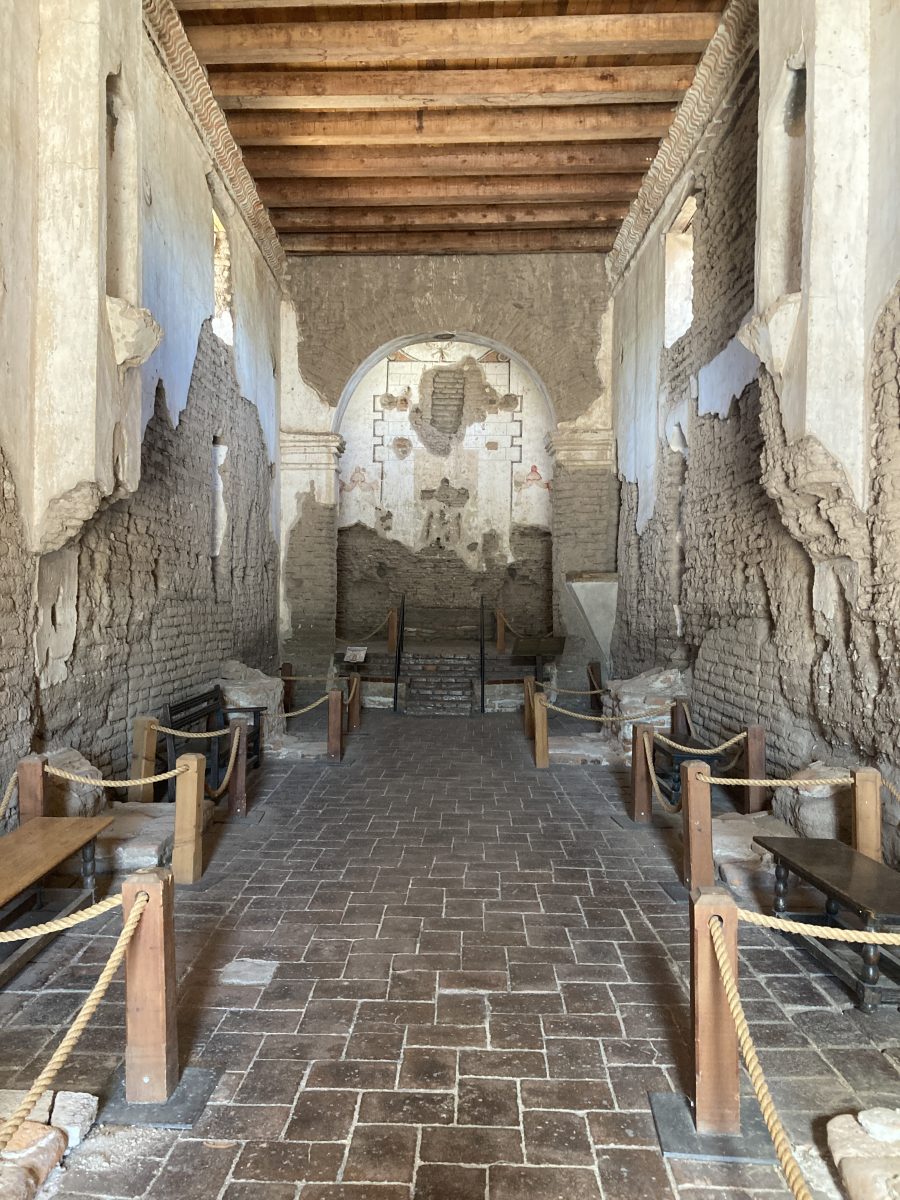 In 1937, the WPA took charge with restoration of the nave shown here. The Tumacacori Museum was built by the WPA-CCC across the courtyard which houses three beautiful dioramas constructed by the National Park Service’s Western Museum Laboratories showing how this mission looked at it’s best. Herbert Collins painted these displays:
In 1937, the WPA took charge with restoration of the nave shown here. The Tumacacori Museum was built by the WPA-CCC across the courtyard which houses three beautiful dioramas constructed by the National Park Service’s Western Museum Laboratories showing how this mission looked at it’s best. Herbert Collins painted these displays:
Photograph of Mr. Jackson, Dr. Fryxell, and Mr. Collins, the latter an artist with the NPS, under Works Progress Administration (WPA). The building was formerly the Federal Land Bank on Fulton St. W edge of University of California. Part of NPS Western Museum Laboratory set-up when photo was taken. This photo I found during my research for my book “Ranger of the Lost Art–Rediscovering the WPA Poster Art of our National Parks.” This is perhaps one of the most important photos ever taken by the NPS–with William Henry Jackson standing on the left. He participated in the Ferdinand Hayden Survey of 1871-2 and took the first photographs of the Yellowstone area creating our first national Park. The first previewing of this diorama:
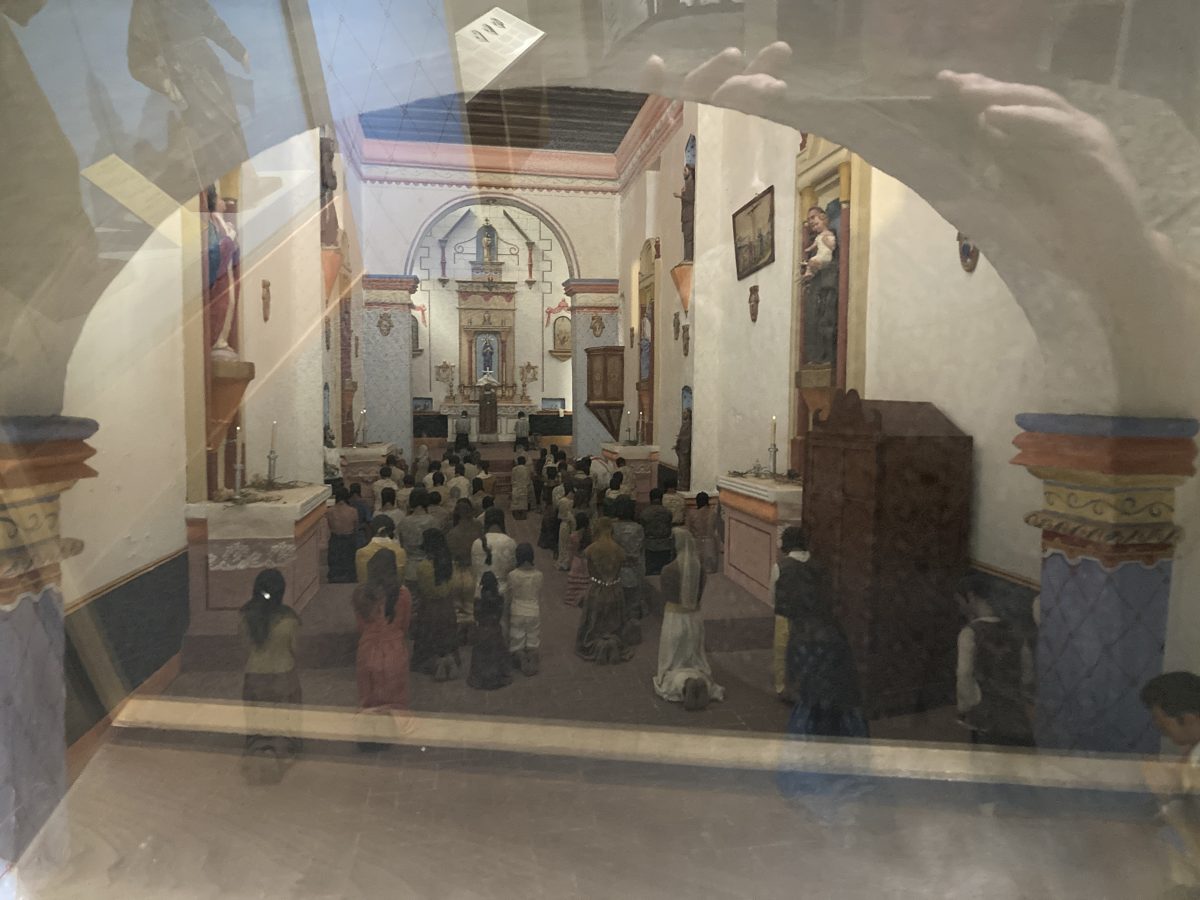 After my poster research, I am now trying to track down all the dioramas built at Berkeley. These were painstaking to produce–the Grand Teton diorama, first in this series, taking a full three years to build. It was chainsawed in half in five minutes and carted to the park dump in 1973..
After my poster research, I am now trying to track down all the dioramas built at Berkeley. These were painstaking to produce–the Grand Teton diorama, first in this series, taking a full three years to build. It was chainsawed in half in five minutes and carted to the park dump in 1973..
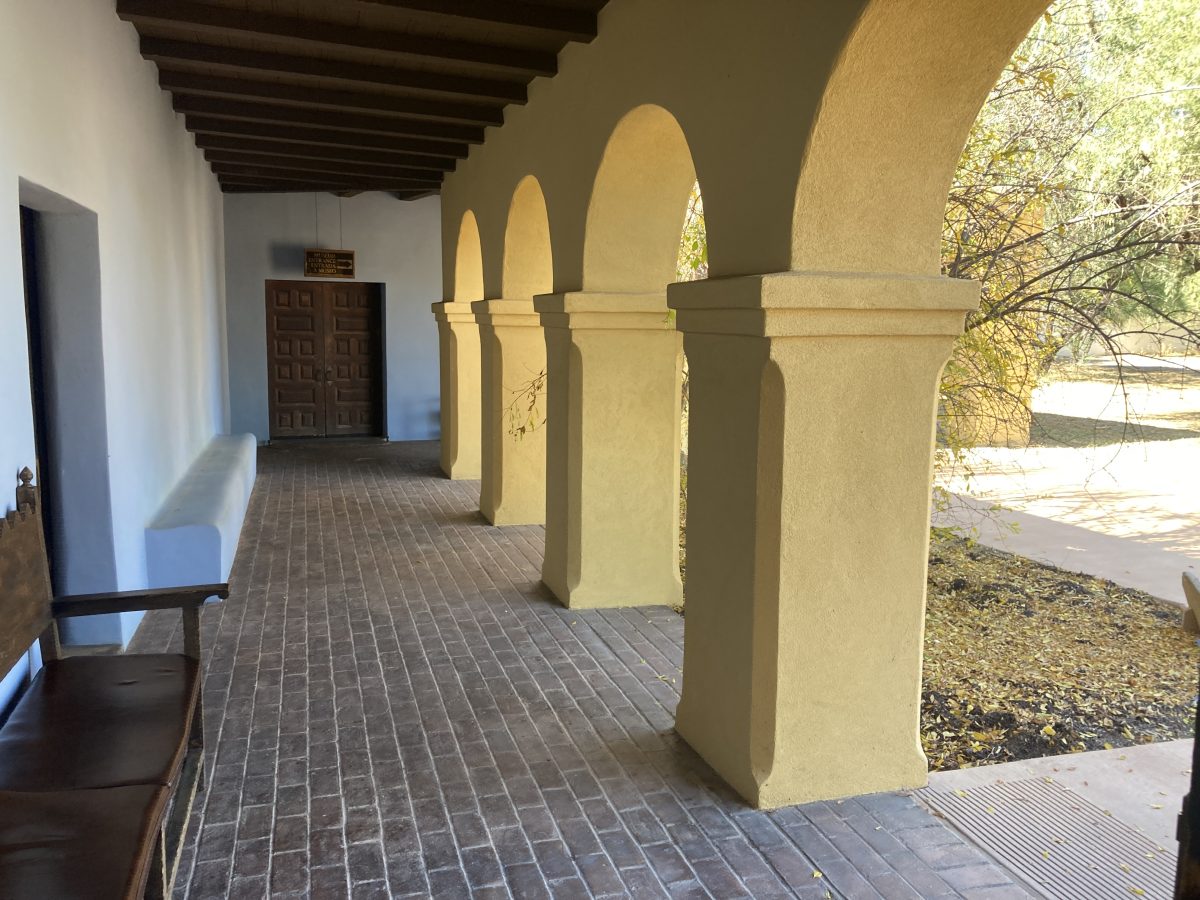 The 1937 WPA remodel creating the Museum
The 1937 WPA remodel creating the Museum
Ceiling motif
And a WPA open gutterspout. Stay tuned……

